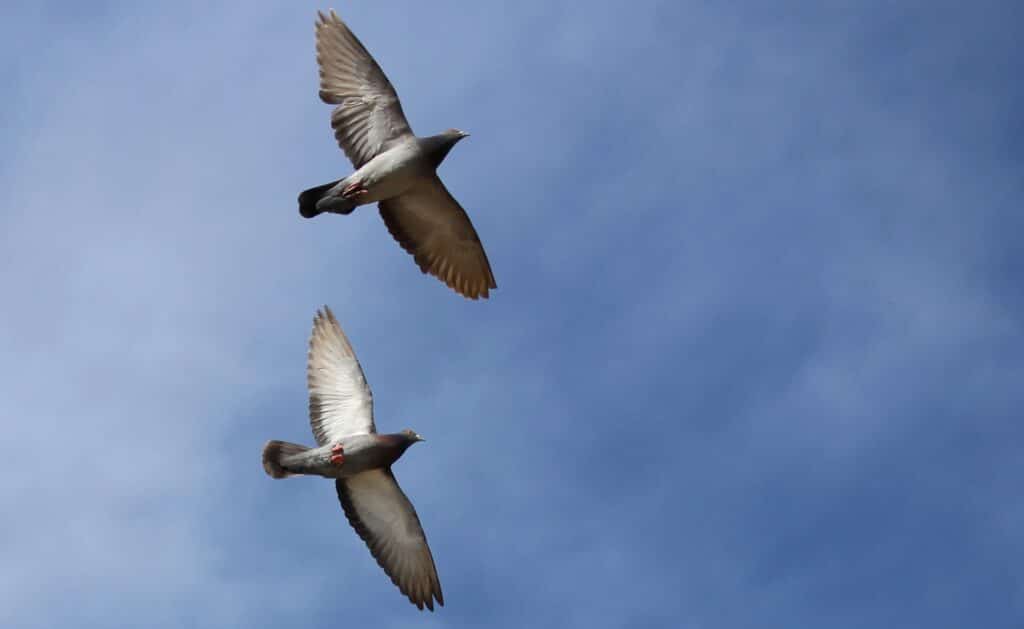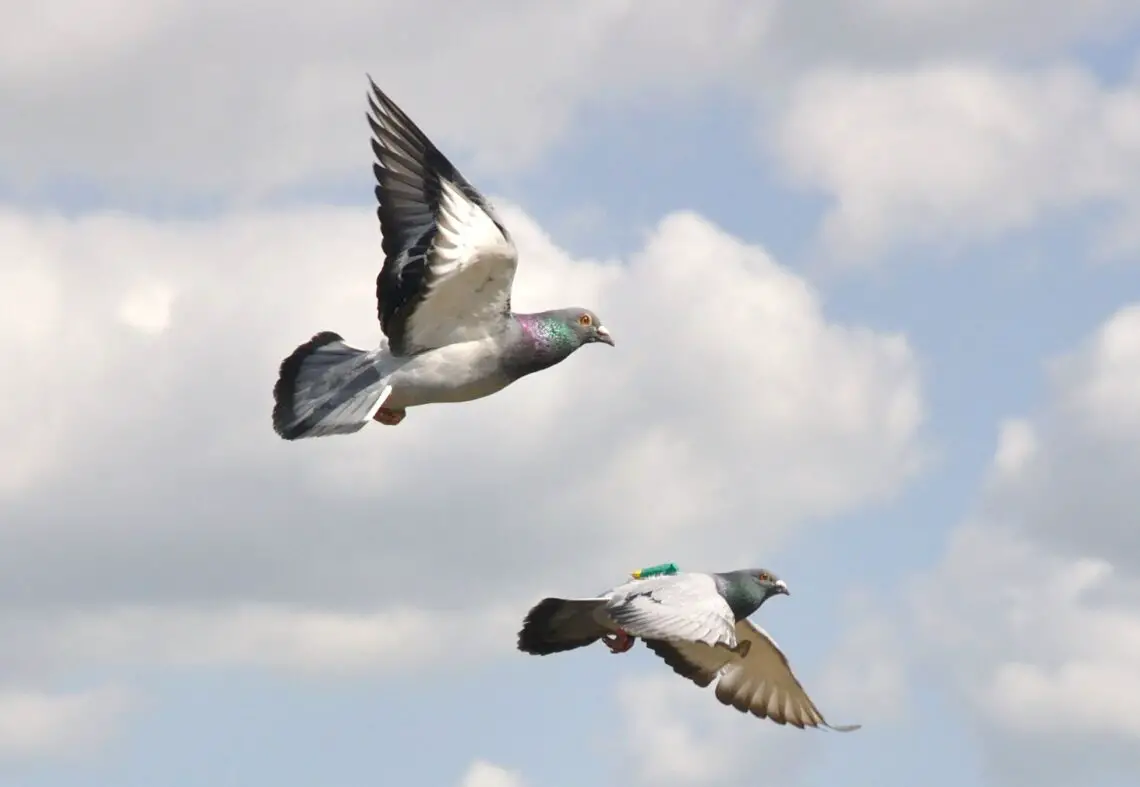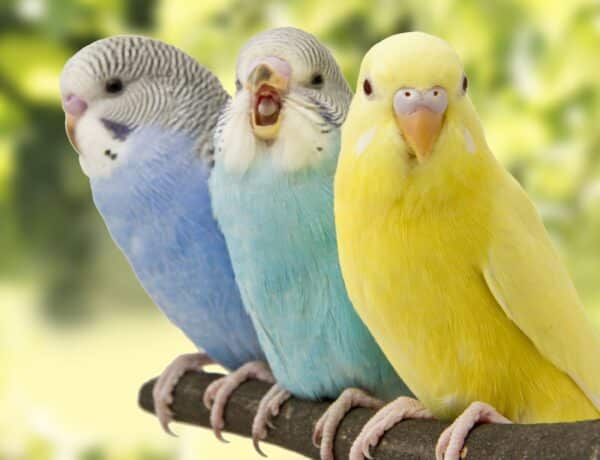Introduction
How Fast Do Pigeons Fly: Pigeons, formally known as rock doves (Columba livia), have a rich history intertwined with human civilization. Revered for their messenger roles during wartime and their presence as urban companions, pigeons have earned their place in our cultural consciousness. Yet, beneath their unassuming exterior lies a true marvel of avian evolution. To understand the speed at which pigeons can fly is to unveil the intricate mechanisms they employ to navigate skies with grace and efficiency.
From bustling city streets to the tranquil countryside, pigeons have adapted to diverse landscapes and are known for their remarkable homing abilities. Their unique combination of speed and endurance allows them to cover substantial distances during their flights. Whether they’re commuting between their nests and foraging grounds or embarking on cross-country journeys, pigeons have developed a range of adaptations that enable them to thrive in the air.
In this exploration, we’ll delve into the factors that influence pigeon flight speed, such as their anatomy, physiology, and environmental conditions. We’ll also examine the pivotal role pigeons good have played in scientific research and their significance in studies of migration and navigation. Furthermore, we’ll uncover how these remarkable birds have carved out their place in the urban environment, showcasing their agility in adapting to human-dominated landscapes.

Are pigeons the fastest bird?
The peregrine falcon, the fastest animal. can fly at a maximum speed of 389 km/h. A rock dove (common pigeon) can fly at a maximum of 148.9 km/h. Most falcons of other species can also fly at over 200 km/h, so the poor pigeon would lose in a race.
Aerial Predators: Peregrine falcons are apex predators in the avian world, renowned for their exceptional hunting skills. Their speed is a crucial asset when hunting, allowing them to surprise and catch other birds mid-flight.
Anatomical Adaptations: Peregrine falcons have several anatomical adaptations that enable their incredible speed. They have streamlined bodies with strong chest muscles and pointed wings that reduce drag and enhance their aerodynamics during high-speed dives.
Hunting Technique: When hunting, peregrine falcons use a hunting technique called the “stoop” or “stoop-and-swoop.” In this maneuver, they climb to a high altitude and then fold their wings to dive steeply toward their prey. During the stoop, they tuck their wings close to their bodies, reaching their maximum speeds as they close in on the target.
Incredible Eyesight: Peregrine falcons possess incredibly sharp eyesight, which allows them to spot prey from great distances. Their keen vision helps them locate and lock onto fast-moving targets while in flight.
Conservation Success: Peregrine falcons faced a significant decline in population due to the use of pesticides like DDT in the mid-20th century, which caused thinning of their eggshells. However, conservation efforts, including the banning of DDT and the implementation of protective measures, have led to a remarkable recovery of their populations in many areas.
How far can a pigeon fly in a day?
700 miles
Pigeons can fly up to 700 miles in a single day, but are capable of flying far further if their journeys are broken up. The love – if that is the right word – they feel for their homes is so acute that they will sometimes die for it.
Racing Pigeons: Racing pigeons, a type of homing pigeon, are trained to fly long distances and return to their home loft. These birds can cover impressive distances in a single day. A well-trained racing pigeon can fly anywhere from 400 to 600 miles (640 to 965 kilometers) in a day, sometimes even more, depending on the weather conditions and other factors.
Wild Pigeons: Wild pigeons, such as the rock dove (the wild ancestor of domestic pigeons), are also capable of flying significant distances. They are known to travel several miles in search of food and water. However, their flights are typically shorter in duration and distance compared to racing pigeons.
Conditions: Weather conditions play a crucial role in a pigeon’s flight distance. Tailwinds can assist pigeons in covering longer distances more quickly, while headwinds may slow them down. Pigeons are also sensitive to changes in weather and may delay or alter their flights accordingly.
Health and Stamina: The physical condition of a pigeon greatly affects its flying capabilities. Well-fed and healthy pigeons are more likely to cover longer distances than those in poor health or lacking proper nutrition.
Training: Racing pigeons undergo rigorous training to build their endurance and navigation skills. These training sessions prepare them for long-distance races and help them find their way back to their home loft.
How fast can a racing pigeon fly per hour?
Pigeons have been known to fly several thousand miles in returning home, and some have attained average speeds of more than 90 miles per hour (145 km/h) in races.
Racing pigeons are known for their impressive speeds during competitions, and their flying speed is typically measured in meters per minute (m/min) or kilometers per hour (km/h). The average cruising speed of a racing pigeon is around 50 to 60 km/h (31 to 37 mph) during a race. However, these birds are capable of reaching even higher speeds under favorable conditions, such as with tailwinds or when they are highly motivated to return to their home loft.
During a sprint, which is when a racing pigeon is making a final approach to its loft in a race, it can reach speeds of up to 100 km/h (62 mph) or more for short bursts. This remarkable speed allows racing pigeons to cover long distances relatively quickly and is one of the reasons why they are used in competitive pigeon racing events.
It’s important to note that racing pigeons are highly trained and conditioned for these races, and their speed can vary depending on factors like the distance of the race, weather conditions, and the individual bird’s fitness and motivation. Pigeon racing enthusiasts often carefully select and train their birds to maximize their racing potential.
How long can a pigeon fly without stopping?
Pigeons can fly for several hours at a time without stopping, but the exact amount of time they can stay aloft depends on a variety of factors such as the weather conditions, their physical condition, and their level of fatigue.
Pigeons, like many birds, have the ability to fly for extended periods without stopping. The duration of their nonstop flight can vary depending on several factors, including the individual pigeon’s health, age, fitness level, and environmental conditions. Here are some general guidelines:
Short Flights: Pigeons often engage in short flights that may last only a few minutes to a couple of hours. These flights are typically for foraging, finding water, or moving between nearby locations.
Long-Distance Flights: Racing pigeons, which are a specialized breed of homing pigeons, are known for their remarkable long-distance flight abilities. During races, they can fly without stopping for several hours to cover distances of hundreds of miles (or kilometers) in a single day. The specific duration of their nonstop flight depends on the length of the race and the pigeon’s training and conditioning.
Rest Periods: Even during long flights, pigeons may take short breaks or slow down to conserve energy. They often rely on gliding and soaring during these breaks to rest their wing muscles.
Environmental Factors: Weather conditions can play a significant role in a pigeon’s ability to fly without stopping. Strong headwinds, storms, or adverse weather may force pigeons to seek shelter or rest more frequently during flight.
Energy Reserves: Pigeons have a well-developed ability to store energy in their muscles and can tap into these reserves during extended flights. However, once their energy stores are depleted, they will need to land and rest.
Can pigeons sleep while flying?
It is commonly assumed that flying birds maintain environmental awareness and aerodynamic control by sleeping with only one eye closed and one cerebral hemisphere at a time. However, sleep has never been demonstrated in flying birds.
Pigeons, like most birds, do not sleep while flying in the same way humans do when they are in a state of deep, restorative sleep. Birds have adapted to rest one hemisphere of their brain at a time, allowing them to remain alert to potential threats while in flight.
This phenomenon, known as unihemispheric slow-wave sleep (USWS), enables birds to maintain some level of wakefulness even during periods of rest. Essentially, one half of their brain enters a sleep-like state while the other half remains active and vigilant. This adaptation allows birds to continue flying, navigating, and responding to environmental cues while still getting some much-needed rest.
During long flights, pigeons may engage in periods of USWS to rest their brains and conserve energy. They can alternate between the two hemispheres of their brain, effectively taking short “naps” while remaining airborne. This allows them to continue flying for extended periods without experiencing sleep deprivation.
While pigeons can rest one hemisphere of their brain at a time during flight, they still require proper sleep during periods of roosting or perching to fully recover and maintain their overall health and cognitive function.
How far can a pigeon fly in KM?
Flights as long as 1,800 km (1,100 miles) have been recorded by birds in competitive pigeon racing. Their average flying speed over moderate 965 km (600 miles) distances is around 97 km/h (60 miles per hour) and speeds of up to 160 km/h (100 miles per hour) have been observed in top racers for short distances.
Pigeons, specifically racing pigeons, are known for their impressive long-distance flight abilities. The distance a pigeon can fly in kilometers (KM) varies depending on several factors, including the individual pigeon’s training, conditioning, and the specific race or flight they are undertaking. Racing pigeons have been recorded covering distances of several hundred kilometers in a single day. Here are some general guidelines:
Short Flights: Pigeons can fly short distances, often ranging from a few kilometers to around 20-30 kilometers, when they are foraging for food or water or moving between nearby locations.
Long-Distance Races: Racing pigeons, which are a specialized breed of homing pigeons, are capable of flying much greater distances. They are trained for long-distance races, and these races can range from approximately 100 kilometers (about 62 miles) to over 1,000 kilometers (over 620 miles) or more, depending on the racing club and event. Some of the most challenging races can cover distances well over 1,000 kilometers in a single day.
Environmental Factors: Weather conditions, particularly wind and temperature, can significantly impact a pigeon’s flight distance. Tailwinds can assist pigeons in covering longer distances more quickly, while headwinds may slow them down.
Training and Conditioning: The specific distance a pigeon can fly in a race is influenced by its training and conditioning. Racing pigeons are carefully trained and conditioned for long-distance flights to maximize their potential.
Individual Variation: Like any athletes, there can be variation in the performance of racing pigeons. Some may excel at covering long distances, while others may perform better in shorter races.
Where do pigeons go at night?
As night falls, the birds, particularly pigeons, will look for ledges that offer shelter. These are often lower down on your building or nearby property. The pigeons’ overnight roosting spot is likely to be flat and partially or fully sheltered from the wind and rain.
Pigeons, like many birds, seek shelter and rest during the night. Where pigeons go at night can vary depending on their environment and habitat. Here are some common places where pigeons go to roost at night:
Urban Roosts: In urban environments, pigeons often roost on buildings, ledges, and other structures. They may seek out sheltered areas such as building eaves, window sills, bridges, and abandoned buildings. The warmth generated by urban structures can provide some protection from the cold.
Natural Habitats: In more natural or rural settings, pigeons may roost in trees, cliffs, and other natural features. Pigeons have adapted to various environments, so their roosting locations can vary widely.
Nests: Pigeons often return to their nests at night, which are usually located in sheltered areas on buildings, cliffs, or other suitable structures. Pigeons are known for their homing abilities and will return to their established nesting sites.
Flocks: Pigeons are social birds and often roost in groups, especially during the night. You may find them huddled together on a building ledge or tree branch, which can provide warmth and safety in numbers.
Hidden Spots: Pigeons may also seek out hidden or protected spots to avoid predators. This could include areas like dense shrubbery or under overhangs that offer some degree of concealment.
What’s the average life of a pigeon?
With a regular food supply and favorable conditions, a feral pigeon can generally live up to 15 years, with the most elderly able to survive to the age of 30. However, average lifespans tend to be much shorter – three to five years.
The average lifespan of a pigeon can vary depending on various factors, including whether they are domestic or wild pigeons and the specific environmental conditions they encounter. Here are some general guidelines for the average lifespan of pigeons:
Wild Pigeons (Rock Doves): Wild pigeons, often referred to as rock doves (Columba livia), typically have a shorter life span compared to their domestic counterparts. In the wild, they face various challenges, including predation, disease, and environmental factors. On average, wild pigeons may live for 3 to 5 years, although some may live longer.
Domestic Pigeons: Domestic pigeons, such as racing pigeons and homing pigeons, tend to have longer life spans than their wild counterparts. With proper care and protection from many of the natural threats faced by wild pigeons, domestic pigeons can live significantly longer. It is not uncommon for well-cared-for domestic pigeons to reach 10 to 15 years of age or even more.
Urban Pigeons: Pigeons living in urban environments often have access to a consistent source of food and shelter, which can contribute to their longer life spans compared to wild pigeons. Some urban pigeons may live for 5 to 10 years or more, depending on the quality of their environment and access to resources.

Conclusion
The speed at which pigeons fly is a testament to the remarkable adaptations that these birds have developed over millennia. From their sleek and aerodynamic bodies to their efficient metabolism and navigational skills, pigeons have honed their abilities to traverse the skies with impressive speed and precision. While the average cruising speed of a pigeon may range from 40 to 60 miles per hour (64 to 96 kilometers per hour), these birds are capable of reaching even higher speeds during their flights.
Pigeons have not only captured our fascination with their flying abilities but have also contributed significantly to our understanding of avian navigation. Their role in scientific research, particularly in the field of homing and migration studies, has been invaluable.
Moreover, pigeons have adapted remarkably well to urban environments, showcasing their ability to coexist with humans and thrive in cities across the world. Their presence in our midst serves as a reminder of the intricate relationship between wildlife and our urban landscapes.
In the end, the question of how fast pigeons fly reveals not just the speed of these avian wonders but also the profound connection between nature and human civilization. It underscores the importance of appreciating the remarkable adaptations and behaviors of the creatures that share our planet. So, the next time you spot a pigeon break in flight, take a moment to marvel at the elegant combination of biology and evolution that allows these birds to soar through the skies with such grace and speed.



No Comments